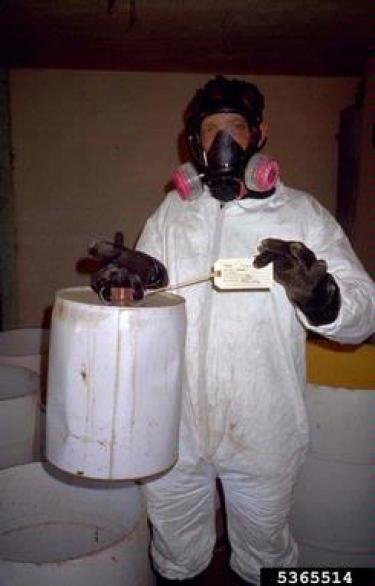After Applying Pesticides
If you have completely used up your pesticide, rinse the container and other equipment thoroughly (do this at the site of application—never wash pesticides down a drain or near a water source) and dispose of it according to the label directions.
If you have some left over, you should store it in its original container in a separate and securely locked area. Keep it dry, far from water sources or wells, and between 40 and 90 degrees Fahrenheit. Avoid exposing your pesticide to freezing temperatures or direct sunlight. And, as always, follow the label directions for more details on storage.
My pesticides are put away. What’s next?
You turned to pesticides to restore balance and health to your woods. Now is a good time to think about how you’re going to keep that balance and health in the long term.
A combination approach that combines all the IPM methods is best, because it comes closest to nature’s own intended cycle. That means:
- Avoid “high grading” when harvesting, which leaves behind trees of low commercial value and shifts your forest toward less desirable and less robust species.
- Plant bare or disturbed areas on your land with native, weed-free seed mixes to prevent invasive species from moving in.
- Use prescribed fire and thinning to keep stands open and trees healthier.
- Add pesticides and herbicides into the mix as needed, especially during a stand’s first and second growing season, when seedling survival is sensitive to competition. But remember, pesticide use is a last resort in IPM.
With a good mix of planning, treatment and prevention, you can keep your woods strong and keep unwanted weeds and bugs at bay. And you can get help when you need it, because pesticide resources are widely available.
How can I get more tips?
It’s simple! Enter your email below.

